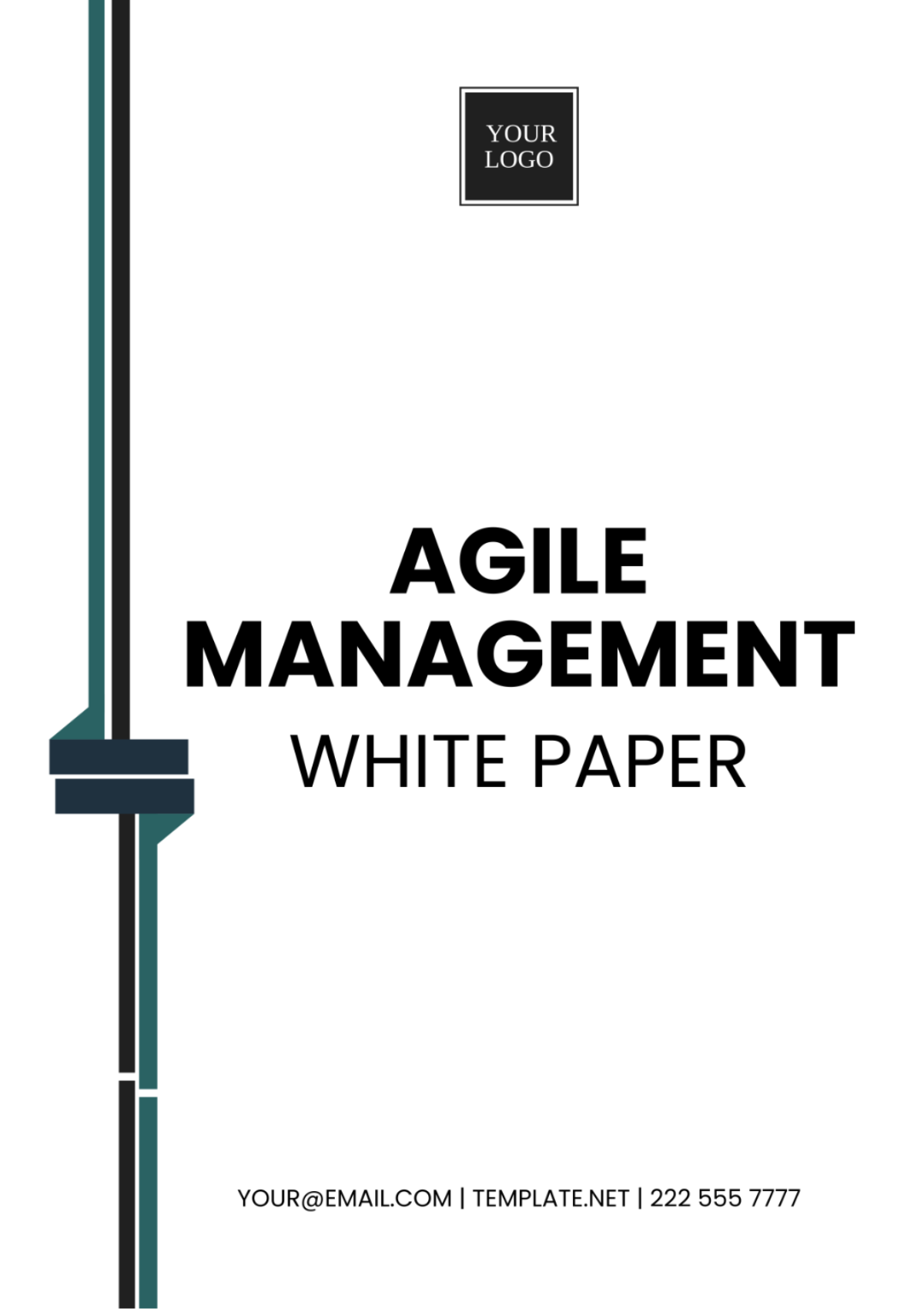Agile Management White Paper
I. Executive Summary

This white paper provides an overview and strategic insight into the adoption of Agile methodologies at [YOUR COMPANY NAME]. It discusses the benefits these practices offer, specifically tailored to our operations in [INDUSTRY/SECTOR], and outlines a plan for implementation and ongoing management.
II. Introduction
The concept of Agile project management has revolutionized software development and several other industries by emphasizing flexibility, continuous improvement, and stakeholder involvement. This paper explores how [YOUR COMPANY NAME] can leverage these principles to enhance project outcomes and customer satisfaction.
III. Agile Methodologies Overview
Agile project management is an iterative approach that helps teams deliver value faster, with greater quality and predictability, and with more ability to respond to change. Key methodologies discussed include:
1. Scrum
Framework: Scrum is a framework for Agile project management that focuses on delivering value in short iterations called sprints (usually 2-4 weeks long).
Roles: Key roles include Product Owner, Scrum Master, and the Development Team.
Artifacts: Scrum uses artifacts such as Product Backlog, Sprint Backlog, and Burndown Charts to track progress and prioritize work.
Events: Events like Sprint Planning, Daily Stand-ups, Sprint Reviews, and Retrospectives ensure regular communication and feedback.
2. Kanban
Visualization: Kanban visualizes work as it moves through various stages on a Kanban board, typically represented as columns (e.g., To Do, In Progress, Done).
Work in Progress (WIP) Limits: It emphasizes limiting the work in progress to improve flow and reduce multitasking, thereby increasing efficiency.
Continuous Improvement: Kanban encourages continuous improvement through regular review meetings and optimizing workflow processes.
3. Lean
Principles: Lean principles aim to eliminate waste, optimize processes, and deliver value efficiently.
Value Stream Mapping: Identifies and maps the entire workflow, highlighting areas of improvement and waste reduction opportunities.
Just-In-Time (JIT): Focuses on delivering work or resources just when they are needed, reducing inventory and overhead costs.
4. Extreme Programming (XP)
Practices: XP emphasizes coding standards, continuous integration, pair programming, test-driven development (TDD), and frequent releases.
Customer Feedback: It encourages regular customer feedback and collaboration throughout the development process.
Embracing Change: XP is highly adaptable to changing requirements, promoting flexibility and responsiveness.
IV. Benefits of Agile for [YOUR COMPANY NAME]
Introducing and applying Agile methodologies within [YOUR COMPANY NAME] can offer a multitude of benefits, such as:
Increased project transparency and visibility: Agile practices like daily stand-ups and burndown charts enhance transparency and trust among stakeholders by consistently updating and communicating about project progress and issues.
Higher product quality: Agile promotes regular testing, feedback, and team collaboration, leading to early bug detection and better product quality. Iterative development ensures frequent revisions, which minimize major defects and boost product reliability.
Improved stakeholder satisfaction: Agile frameworks like Scrum involve stakeholders throughout development, incrementally integrating their requirements and enabling early feedback via regular demos, leading to a product that better meets their expectations and needs.
Enhanced ability to manage changing priorities: Agile methodologies facilitate rapid response to change via backlog prioritization, sprint planning, and adaptive planning, allowing teams to efficiently tackle new priorities and market changes, thus optimizing value and competitiveness.
V. Implementation Strategy
The rollout of Agile methodologies at [YOUR COMPANY NAME] involves:
Assessment: Evaluate current project management practices to identify strengths, weaknesses, and areas for improvement.
Training: Conduct customized Agile training sessions to equip staff with the necessary knowledge and skills for Agile practices and tools.
Integration: Gradually integrate Agile methods into ongoing projects, starting with small teams or pilot projects to test and refine Agile processes.
Review and Adaptation: Establish regular review cycles to assess progress, gather feedback, and make necessary adaptations to optimize Agile implementation across the organization.
VI. Case Studies
This section is dedicated to providing comprehensive case studies from prominent companies in the [INDUSTRY/SECTOR]. These detailed examinations will illustrate how various industry leaders have effectively adopted Agile methodologies in their operations. Moreover, it will highlight the concrete advantages these companies have gained as a result of implementing these practices successfully.
VII. Best Practices
A collection of best practices that [YOUR COMPANY NAME] should consider during and after the adoption of Agile methodologies:
Engage regularly with stakeholders: Foster open communication channels to gather feedback, clarify requirements, and ensure alignment with stakeholders throughout the project lifecycle.
Prioritize continuous team education: Invest in ongoing training and skill development for teams to stay updated with Agile practices, tools, and emerging industry trends, fostering a culture of continuous learning and improvement.
Use collaborative tools and techniques: Leverage Agile-friendly tools such as task boards, digital Kanban boards, collaboration platforms, and integrated project management tools to enhance teamwork, visibility, and productivity.
Emphasize team and interdepartmental communication: Promote clear, regular communication within and between teams to increase knowledge sharing, proactive problem-solving, and cross-functional teamwork, boosting project outcomes and organizational synergy.
VIII. Risks and Mitigation
While Agile offers considerable benefits, certain risks need to be managed. This section discusses potential challenges and their mitigation strategies:
Resistance to change among staff:
Overwhelming ongoing projects with new processes:
Resource Allocation: Allocate adequate resources (time, budget, staff) for training, coaching, and adopting Agile practices, while monitoring workloads to avoid burnout.
Ensuring consistent application of Agile principles:
IX. Conclusion
In conclusion, the adaptation of Agile methodologies at [YOUR COMPANY NAME] promises to enhance our project execution and delivery significantly. With careful planning and execution, we expect to see marked improvements in teamwork, customer satisfaction, and project outcomes.
X. Call to Action
We invite all employees of [YOUR COMPANY NAME] to engage with this transformative journey actively. Your feedback and active participation are crucial for our collective success.
White Paper Templates @ Template.net































